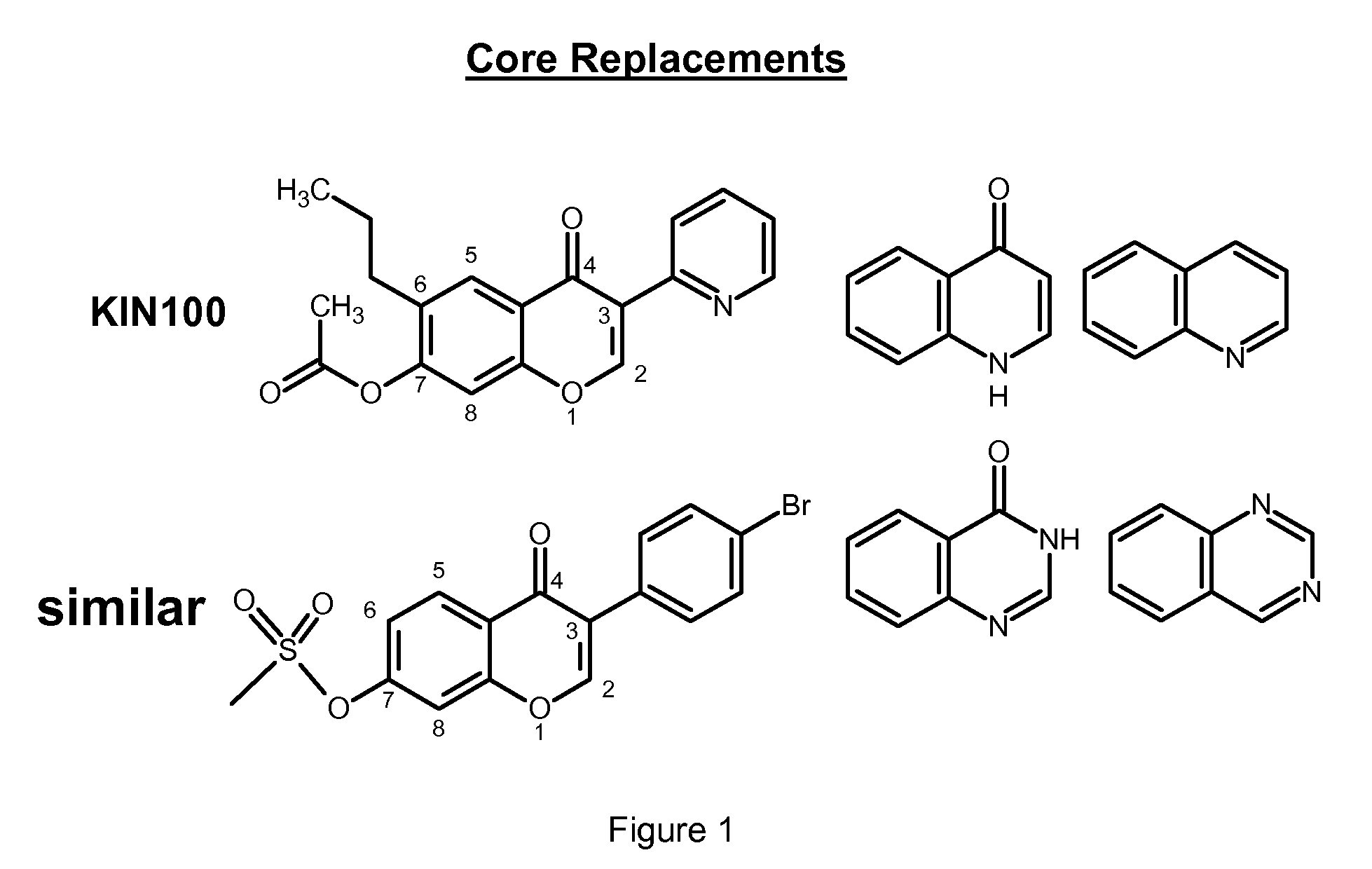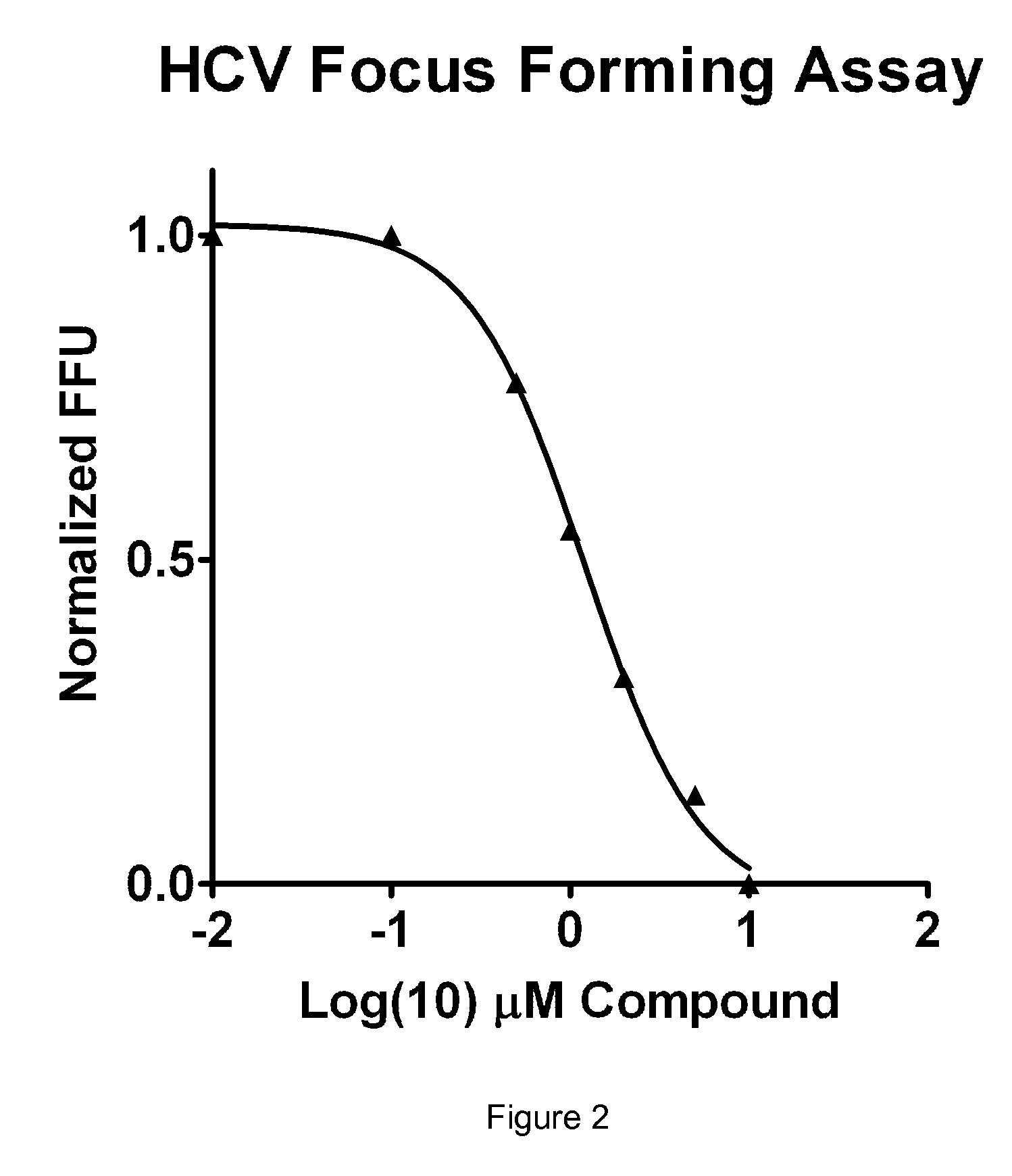Isoflavone anti-viral compounds
a technology of isoflavone and antiviral compounds, which is applied in the direction of antibody medical ingredients, biocide, viruses/bacteriophages, etc., can solve the problems of limited antiviral drugs, large public health problems, and many poor side effects, so as to improve the host's innate antiviral response, less susceptible, and less side effects
- Summary
- Abstract
- Description
- Claims
- Application Information
AI Technical Summary
Benefits of technology
Problems solved by technology
Method used
Image
Examples
example 1
Synthesis of 7-hydroxy-3-(2-pyridyl)chromen-4-one
[0124]
[0125]Resorcinol is reacted with 2-(2-pyridyl)acetyl chloride forming the product 1-(2,4-dihydroxyphenyl)-2-(2-pyridyl)ethanone. Such reactions are described in Chemistry of Heterocyclic Compounds (NY, N.Y., USA) 1977 Vol., 13, p. 948-953. The product is reacted with triethylorth formate to form 7-hydroxy-3-(2-pyridyl)chromen-4-one (Compound 1) which can be reacted by one skilled in the art to form compounds according to the present description.
example 2
Synthesis of [4-oxo-6-propyl-3-(2-pyridyl)chromen-7-yl] acetate
[0126]
[0127]4-Propylbenzene-1,3-diol is reacted with 2-(2-pyridyl)acetyl chloride forming the product 1-(2,4-dihydroxy-5-propyl-phenyl)-2-(2-pyridyl)ethanone. Such reactions are described in Chemistry of Heterocyclic Compounds (NY, N.Y., USA) 1977 Vol., 13, p. 948-953. The product is reacted with triethylorth formate to form 7-hydroxy-6-propyl-3-(2-pyridyl)chromen-4-one which can be reacted with acetic anhydride and a base to form [4-oxo-6-propyl-3-(2-pyridyl)chromen-7-yl] acetate.
example 3
Synthesis of [4-oxo-6-propyl-3-(2-pyridyl)chromen-7-yl] acetate
[0128]
[0129]Resorcinol is reacted with 2-(4-bromophenyl)acetyl chloride forming the product 2-(4-bromophenyl)-1-(2,4-dihydroxyphenyl)ethanone. Such reactions are described in Chemistry of Heterocyclic Compounds (NY, N.Y., USA) 1977 Vol., 13, p. 948-953. The product is reacted with triethylorth formate to form 3-(4-bromophenyl)-7-hydroxy-chromen-4-one which can be reacted with methane sulfonyl chloride and a base to form [3-(4-bromophenyl)-4-oxo-chromen-7-yl] methanesulfonate.
PUM
| Property | Measurement | Unit |
|---|---|---|
| time | aaaaa | aaaaa |
| viral resistance | aaaaa | aaaaa |
| resistance | aaaaa | aaaaa |
Abstract
Description
Claims
Application Information
 Login to View More
Login to View More - R&D
- Intellectual Property
- Life Sciences
- Materials
- Tech Scout
- Unparalleled Data Quality
- Higher Quality Content
- 60% Fewer Hallucinations
Browse by: Latest US Patents, China's latest patents, Technical Efficacy Thesaurus, Application Domain, Technology Topic, Popular Technical Reports.
© 2025 PatSnap. All rights reserved.Legal|Privacy policy|Modern Slavery Act Transparency Statement|Sitemap|About US| Contact US: help@patsnap.com



